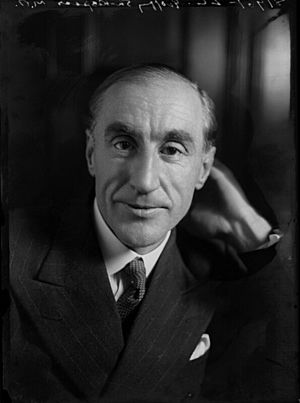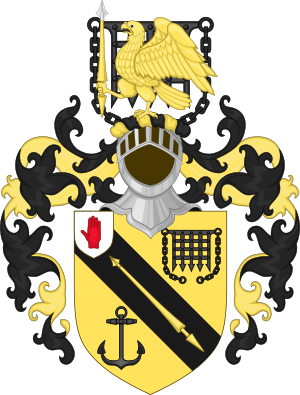Geoffrey Shakespeare facts for kids
Quick facts for kids
Geoffrey Shakespeare
|
|
|---|---|
 |
|
| Member of Parliament for Wellingborough |
|
| In office 15 November 1922 – 16 November 1923 |
|
| Preceded by | Walter Smith |
| Succeeded by | William Cove |
| Member of Parliament for Norwich |
|
| In office 30 May 1929 – 15 June 1945 |
|
| Preceded by | Hilton Young and J. Griffyth Fairfax |
| Succeeded by | Lucy Noel-Buxton and John Paton |
| Personal details | |
| Born | 23 September 1893 Norwich, England |
| Died | 8 September 1980 (aged 86) Bromley, England |
| Parent |
|
Sir Geoffrey Hithersay Shakespeare, 1st Baronet PC (born September 23, 1893 – died September 8, 1980) was a British politician. He was a member of the Liberal Party. He served in the government for many years. He helped make important decisions for the country.
Contents
Early Life and Education
Geoffrey Shakespeare was born in Norwich, England. His father was Rev. John Howard Shakespeare. He was the secretary of the Baptist Union of Great Britain. Geoffrey went to Highgate School for his education.
He was a distant relative of the famous writer William Shakespeare. Geoffrey served in the First World War. After the war, he studied at Emmanuel College, Cambridge. He earned two degrees there. He was also the president of the Cambridge Union Society in 1920. This is a debating society for students.
Starting a Political Career
In 1922, Geoffrey became a lawyer. This is called being "called to the Bar". From 1921 to 1923, he worked for David Lloyd George. Lloyd George was the Prime Minister at the time. Geoffrey was his Private Secretary. This meant he helped Lloyd George with his daily work.
As a Private Secretary, he was part of important peace talks. These talks led to the Anglo-Irish Treaty in 1921. This treaty created the Irish Free State. Geoffrey wrote about these events in his book, Let Candles be Brought In.
Serving in Parliament
Geoffrey Shakespeare became a Member of Parliament (MP) in 1922. An MP is someone elected to represent people in the UK Parliament. He first represented Wellingborough. He was an MP for the National Liberal Party.
Later, he represented Norwich. He was an MP for Norwich from 1929 to 1945. During this time, he was part of the Liberal and then the Liberal National parties.
Government Roles
Sir Geoffrey held many important jobs in the government:
- From 1931 to 1932, he was a Lord Commissioner of the Treasury. He also served as the Liberal National Chief Whip. This role helps organize the party's votes in Parliament.
- From 1932 to 1936, he was a Parliamentary Secretary for the Ministry of Health.
- From 1936 to 1937, he worked for the Board of Education.
- From 1937 to 1940, he was in charge of money matters for the Navy.
- In 1940, he was the Secretary for Overseas Trade.
- From 1940 to 1942, he worked for the Under-Secretary of State for Dominion Affairs. This department handled relations with countries like Canada and Australia.
He also led the Children's Overseas Reception Board from 1940 to 1942. This board helped move children to safer countries during World War II.
Later Life and Achievements
After his time in Parliament, Sir Geoffrey continued to be active. He was a director at the Abbey National Building Society. He worked there from 1943 to 1977. He was also the Deputy Chairman for some years.
In 1942, he was given the title of baronet. This is a special honor from the King or Queen. In 1945, he became a Privy Counsellor. This is another high honor for people who have served the country.
He died in Bromley, England, in 1980. He was 86 years old.
His Memoirs
In 1949, Sir Geoffrey published his book, Let Candles Be Brought In. This book was very helpful for historians. It gave a detailed look at the peace talks for the Anglo-Irish Treaty in 1921. He was there as an eyewitness. His book described the final moments of the talks. It included when Lloyd George told the Irish delegation they had to sign the treaty or face war.


